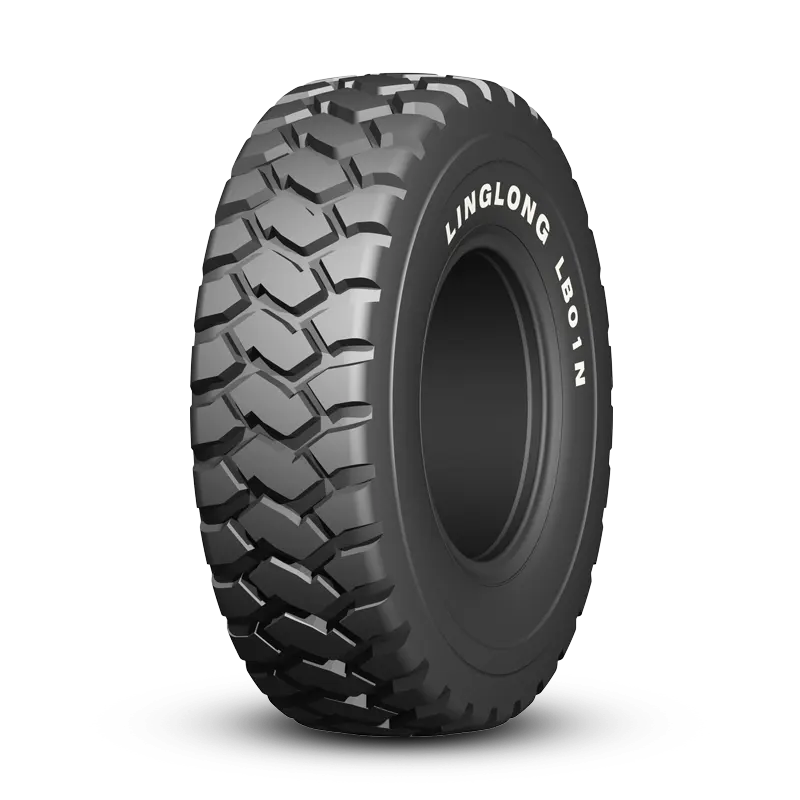Key Features of OTR Tires
2024-05-20
Off-the-road (OTR) tires are a specialized category of tires designed to operate in harsh and demanding environments. These tires are used in industrial, construction, mining, agricultural, and other off-road applications where standard road tires would not be suitable. Here are some key aspects of OTR tires:
Key Features of OTR Tires:
1. Robust Construction:
- Heavy-duty Materials: OTR tires are made with reinforced materials, including multiple layers of rubber and steel belts, to withstand extreme conditions.
- Durability: They are built to resist cuts, punctures, and abrasions that are common in off-road environments.
2. Tread Patterns:
- Aggressive Treads: These tires feature deep and aggressive tread patterns that provide superior traction on loose, uneven, or muddy surfaces.
- Self-cleaning Treads: Some OTR tires have self-cleaning designs to prevent the buildup of mud and debris, ensuring consistent performance.
3. Size and Load Capacity:
- Large Dimensions: OTR tires come in a wide range of sizes to fit various heavy equipment, from small skid steer loaders to giant mining trucks.
- High Load Capacity: They are designed to support heavy loads, making them suitable for carrying large amounts of weight.
4. Specialized Designs:
- Bias Ply vs. Radial: OTR tires are available in both bias ply and radial designs. Bias ply tires are known for their ruggedness and resistance to sidewall damage, while radial tires offer a smoother ride and better heat dissipation.
- Specific Applications: There are specific OTR tire designs for different applications, such as rock quarrying, mining, earthmoving, and agricultural tasks.
Uses of OTR Tires:
1. Construction: Used on construction machinery like loaders, graders, and dump trucks to navigate rough terrain and carry heavy loads.
2. Mining: Essential for large mining equipment such as haul trucks and wheel loaders, where durability and load capacity are critical.
3. Agriculture: Utilized on tractors, combines, and other agricultural machinery to handle various soil conditions and heavy agricultural work.
4. Forestry: Used in forestry equipment to traverse through dense and rugged forest landscapes.
5. Industrial: Employed in industrial settings for heavy-duty equipment used in material handling and other industrial processes.
Benefits of OTR Tires:
1. Enhanced Traction: Deep and aggressive tread patterns provide excellent grip on various off-road surfaces, improving safety and performance.
2. Longer Lifespan: Built to last longer than standard tires due to their robust construction and resistance to damage.
3. Higher Load-Bearing Capacity: Designed to support the weight of heavy machinery and loads, making them indispensable in industries that require the transport of heavy materials.
4. Reduced Downtime: Their durability reduces the frequency of tire replacements and repairs, contributing to lower operational costs and increased productivity.
Maintenance Tips for OTR Tires:
1. Regular Inspections: Frequently check for signs of wear, damage, or punctures. Early detection of issues can prevent larger problems.
2. Proper Inflation: Maintain the recommended tire pressure to ensure optimal performance and longevity. Underinflation or overinflation can lead to premature tire failure.
3. Rotation and Alignment: Regularly rotate tires and ensure proper alignment to promote even wear and extend tire life.
4. Cleanliness: Keep tires clean from debris and mud to maintain their self-cleaning properties and ensure they perform as designed.
Conclusion:
OTR tires are crucial for the functionality and efficiency of heavy-duty machinery operating in challenging environments. Their specialized design and construction make them indispensable for industries like construction, mining, agriculture, and more. Proper selection and maintenance of OTR tires can significantly enhance the performance and lifespan of the equipment they support.



